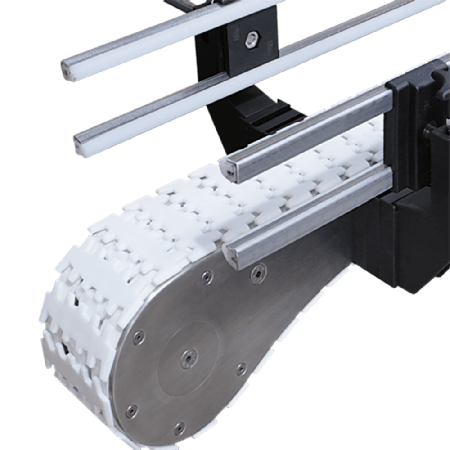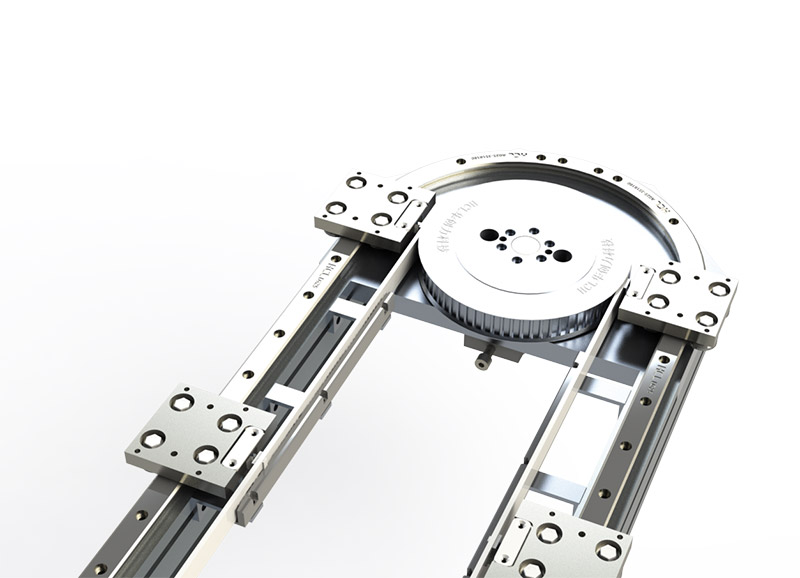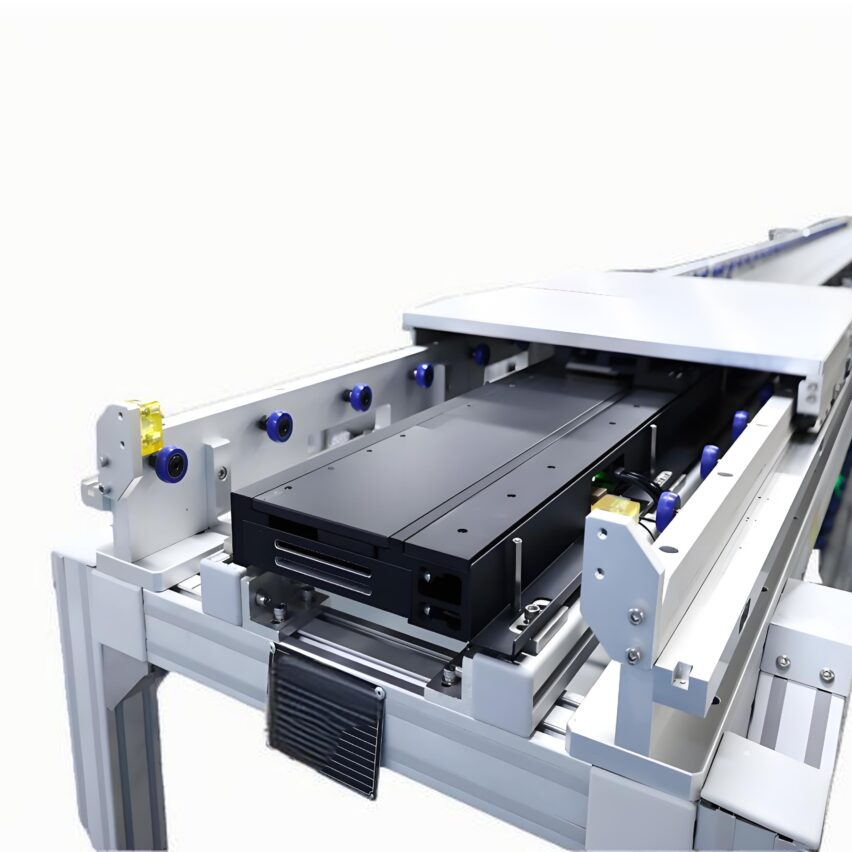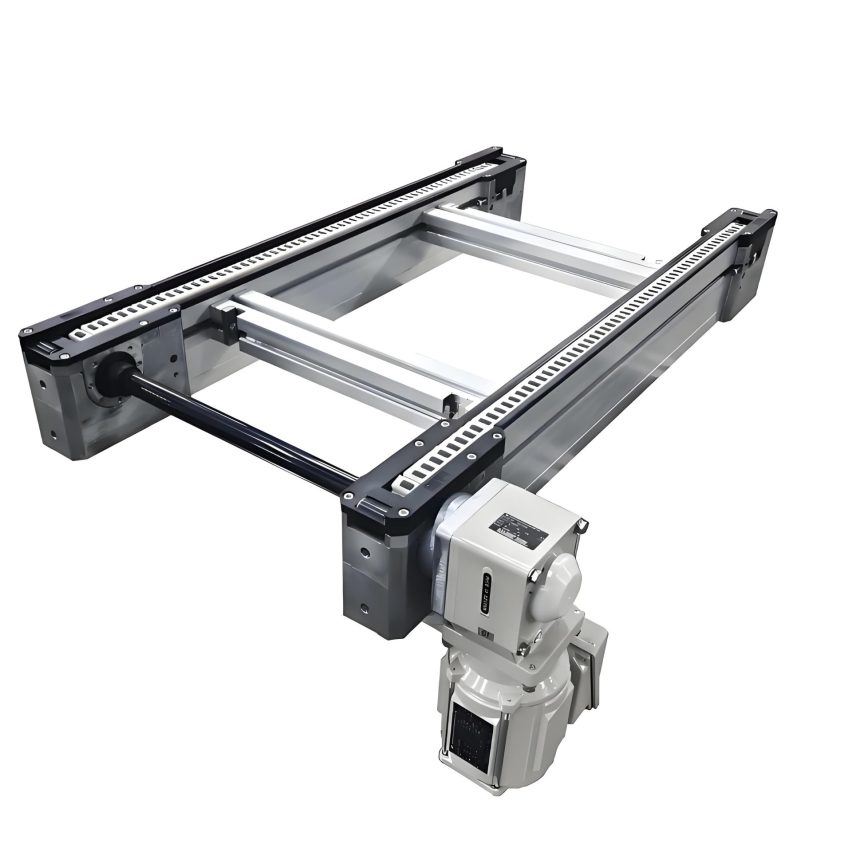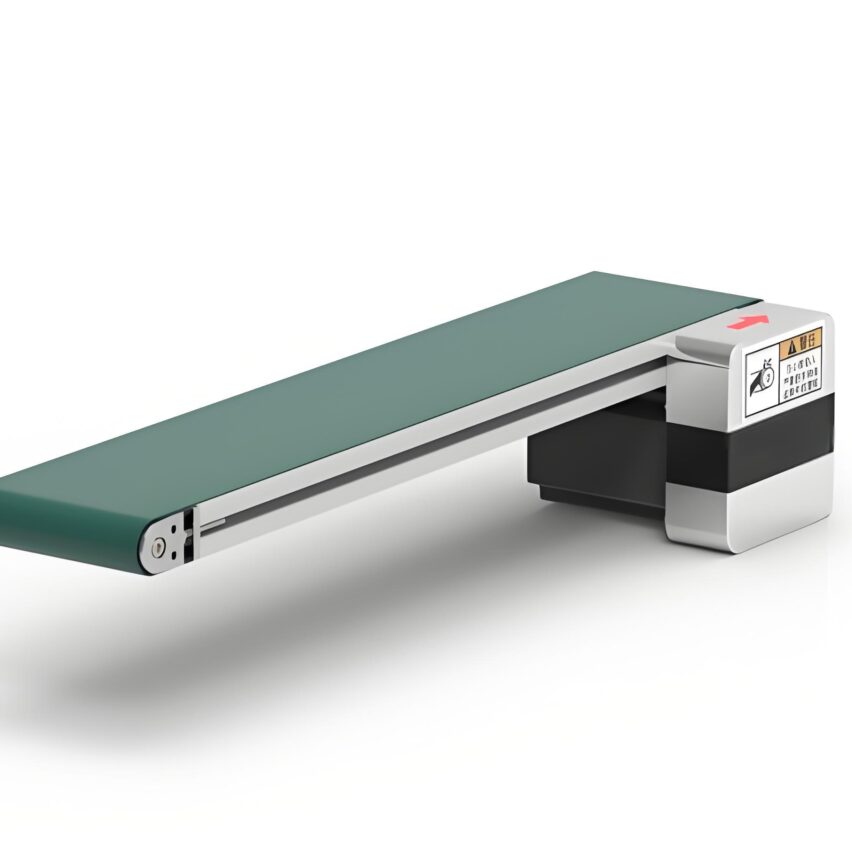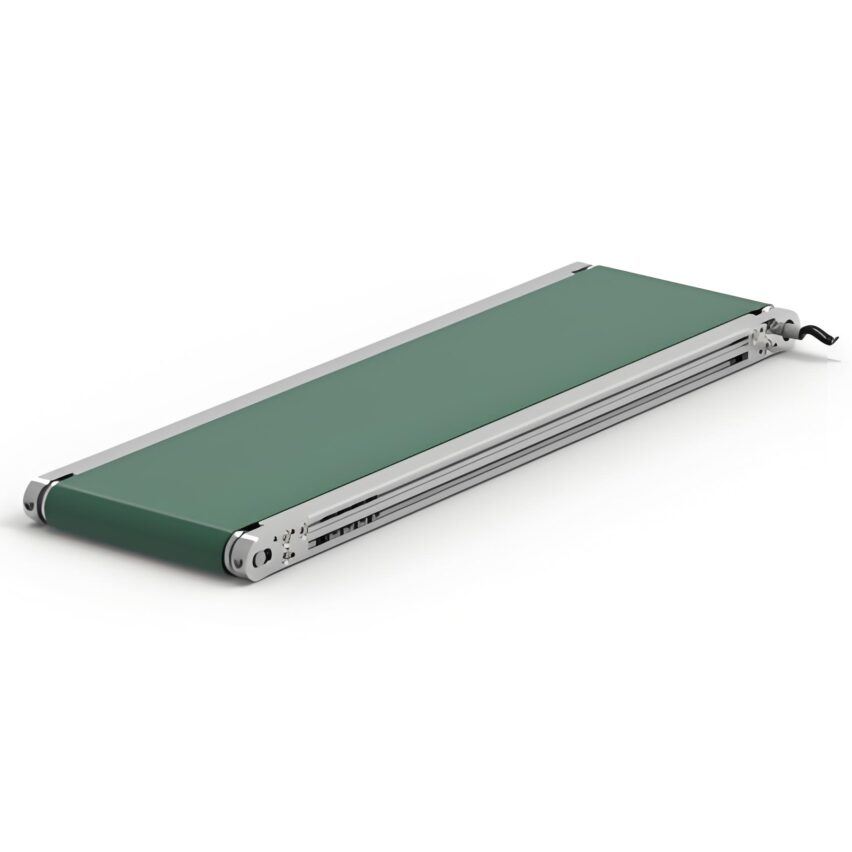On an automotive assembly line, engine parts are beingThe amazing speed of the flow--The work plate carries hundreds of kilograms of metal components that glide smoothly across the track and are intercepted with precision as they arrive at the work station. Once the operator has completed the assembly, he touches a button and the component is instantly accelerated to the next station. Behind this smooth operation is the cyclic speed chain conveyor, theRevolutionary design in industrial transmission.
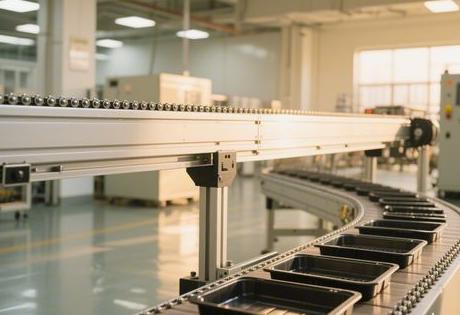
-
I. Mystery of the operation of the multiplier chain: from the basic movement to the compound growth rate
The core secret of the Speed Chain Conveyor Line is itsSubtle design of the physical structure. When the motor-driven sprocket wheel drives the chain to run at a constant speed (usually 0.5-8 m/s), the load-bearing rollers fixed to the chain roll forward along the guide rail. At this time, the rollers (diameter D) at the bottom of the work plate come into contact with the chain rollers (diameter d) due to theRoller diameter significantly larger than roller diameter(common D/d = 2-3 times), creating a unique motion superposition effect:
- Chain base speed(V₁): linear travel speed driven by a motor
- Additional Linear Speed of Roller(V₂): additional speed due to the rotation of the rollers, calculated as V₂ = (D/d) × V₁.
- Workpiece Composition Speed(V total) = V₁ + V₂ = V₁ × (1 + D/d)
For example, when the roller diameter is 3 times that of the roller (D=3d), the speed of the workpiece can be up to 4 times the speed of the chain. Suchvelocity stacking effectThe workpiece can quickly pass through the unloaded area and stop precisely at the work station by means of a stopper, realising the production rhythm of "fast delivery and slow production".
-
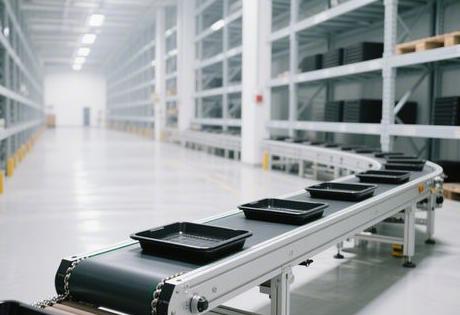
II. System architecture: an engineering paradigm for modular synergy
Circular speed chain conveyor lines do not consist of a single component, but rather of a modular system with multiple components that are precisely coordinated:
| Component Category | core component | Functional features |
|---|---|---|
| power unit | Inverter motors / servo motors | Provides 0.5-8m/s stepless speed regulation, adapting to different production beats. |
| transmission core | Multiple speed chain set | Containing rollers (steel/engineering plastics), rollers (nylon/alloy steel), chain plate, the diameter ratio determines the speed increasing effect. |
| support framework | Aluminium/carbon steel guide | Surface-treated extruded aluminium profiles for rail stability, single section lengths up to 40m |
| position control | Photoelectric sensor + pneumatic stopper | Achieve ±0.5mm level stopping accuracy of workpiece boards and support accumulation function. |
| subsystem | Top lift pan/rotary table | Completion of spatial reversal operations such as turning lines, lifting and lowering, constituting a horizontal or vertical cycle. |
This modular design gives the production lineExtremely high layout flexibilityThe system supports straight line, S-bend, and multi-layer closed-loop forms, and can adjust station spacing at any time. For example, on a laptop assembly line, the line reorganisation for new product introduction can be completed within a week by adding or removing jacking shifter modules.
-
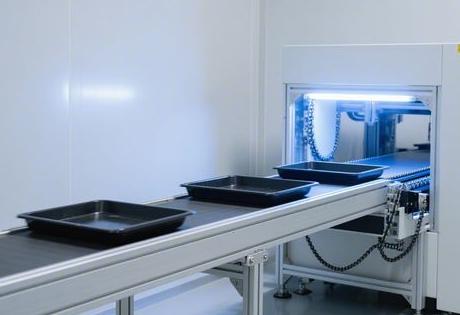
III. Critical design for performance leapfrogging: engineering practice beyond theoretical values
Although the principle of increasing the speed of a multiplier chain may seem simple, the actual design requires overcoming multiple challenges:
-
Dynamic optimisation of growth rate ratios
Theoretical speed increase ratio is determined by D/d, but in practice it will be affected by friction loss. High precision chain manufacturing (tolerance ≤ 0.05mm) andTeflon coated guide railsFriction loss can be controlled within 5%. By adopting steel roller + graphite lubrication solution, an automobile factory still maintains 2.8 times the actual speed increase under 2000kg load. -
Paradoxical Resolution of Load Capacity
Required for light load lines (500kg)Alloy steel roller + reinforced chain plateStructure. The case of Sany Heavy Industry's engine assembly line shows that 1500kg crankshafts are successfully transported stably at 2.3 times speed by parallel design of double-row chain. -
Intelligent control upgrade
Modern multiplier chain systems go beyond the mechanical:
- RFID readerTracking the identity of the tooling boards
- PLC real-time adjustmentSpeed of each section (e.g., a workshop's overall capacity increased by 40% through split-speed zone design)
- IIoT PlatformPrediction of chain life (based on temperature/vibration data)
-
Fourth, multi-industry landing scene: from precision electronics to heavy equipment
The flexible nature of the Speed Chain makes it shine in a number of industrial sectors:
-
Consumer electronics
In the mobile phone motherboard test line, the 0.5m wide aluminium alloy track carries only 2kg of work boards, flowing at three times the speed (18m/min).Static protection design(Conductive wheels + copper rows) to ensure the safety of precision components. -
Automotive Manufacturing
The motor sub-assembly line at Tesla's Shanghai factory uses a multi-layer speed chain circulation system: the upper layer of empty panels returns quickly, and the lower layer of loaded workpieces assembles at a slow speed.Differential control technologyAchievement of work plate merging accuracy of ±1 second. -
Pharmaceuticals and Food
GMP-compliant 304 stainless steel rails for conveying pharmaceutical cartons in a class 100,000 clean environment.Lubrication-free design(Self-lubricating bearings) to avoid the risk of contamination, speed adjustable to 0.1 m/min to complete the filling.
-
V. The invisible value chain in maintenance: full life-cycle effectiveness management
The efficient and long-lasting operation of the Speed Chain relies on a scientific maintenance system, with core control points including:
-
Tension monitoring
Chain sag needs to be ≤2%, calibrated monthly with a tensiometer. Over-tightening will lead to motor overload (temperature rise >60℃), while over-loosening will lead to tooth jumping. -
Lubrication Management
High temperature lithium grease is replenished quarterly, note:
- Excessive lubrication → dust adsorption → increased friction
- Insufficient lubrication → abnormal wear of rollers (inspection cycle reduced to 1 week)
- Predictive maintenance
By monitoring chain link damage with vibration sensors, a factory practice shows that timely replacement of deformed chain plates can reduce 70% unplanned downtime.
-
VI. Future direction of evolution: the twin tracks of green and smart
By analysing the trend of technology iteration in recent years, I believe that the multiplier chain system is facing a double breakthrough:
-
Energy Recovery Innovation
The Bosch pilot project in Germany showed that retrofitting the downhill section of a heavy-duty line with aRegenerative brakes, which can convert 20% kinetic energy into electrical energy to be fed back into the grid, saving over 150,000 kWh of electricity per year. -
digital twin fusion
The virtual multiplier chain system built at Siemens' Chengdu plant, by mapping the physical track state in real time, has succeeded in bringingFailure response time reduced to less than 30 seconds. This digital pre-maintenance model will become standard in high-end manufacturing. -
Materials Science Breakthroughs
Graphene-reinforced nylon composites show amazing potential in tests: compared to conventional rollers, the3 times higher wear resistanceAnd the self-weight is reduced by 40%, heralding the arrival of the next generation of ultra-lightweight conveyor chains.
Ask Yourself: Three Core Questions About Multiplier Chains
Q1: Does the "multiplier speed" of the multiplier chain decrease with the time of use?
Yes, the increased coefficient of friction is the main cause. But byPrecision Roller Processing(Roundness error ≤0.01mm) andAutomatic lubrication system, the growth rate decay rate can be maintained at <3% for five years.
Q2: Why does the work plate still stop accurately at high speed?
depend onThree-stage braking systemFirst photoelectric sensor pre-deceleration, then pneumatic stopper physical interception, and finally positioning pin to complete ± 0.5mm accurate positioning. A TV assembly line measured stopping accuracy of 0.3mm.
Q3: Is maximum load and speed not compatible?
Innovative design is breaking through this limitation. The Trinity programme shows.Double-row chain structure + hydraulic tension compensationCan maintain 2.5x speed at 2 tonnes load, but need to be accompanied by reinforced guideway bracket.
-
As the sun sets on the glass walls of automated factories, the circular speed chain conveyor line is still flowing tirelessly. It has evolved beyond the role of a mere conveyor into asmart manufacturing体系的循环动脉--The links that precisely bite together not only transmit product parts, but also link up the industrial evolution from physical movement to digital control. With the application of flexible materials and breakthroughs in energy recovery technology, this metal dragon is transforming into a lighter and smarter green carrier, quietly defining the temporal and spatial logic of the factory of the future.




